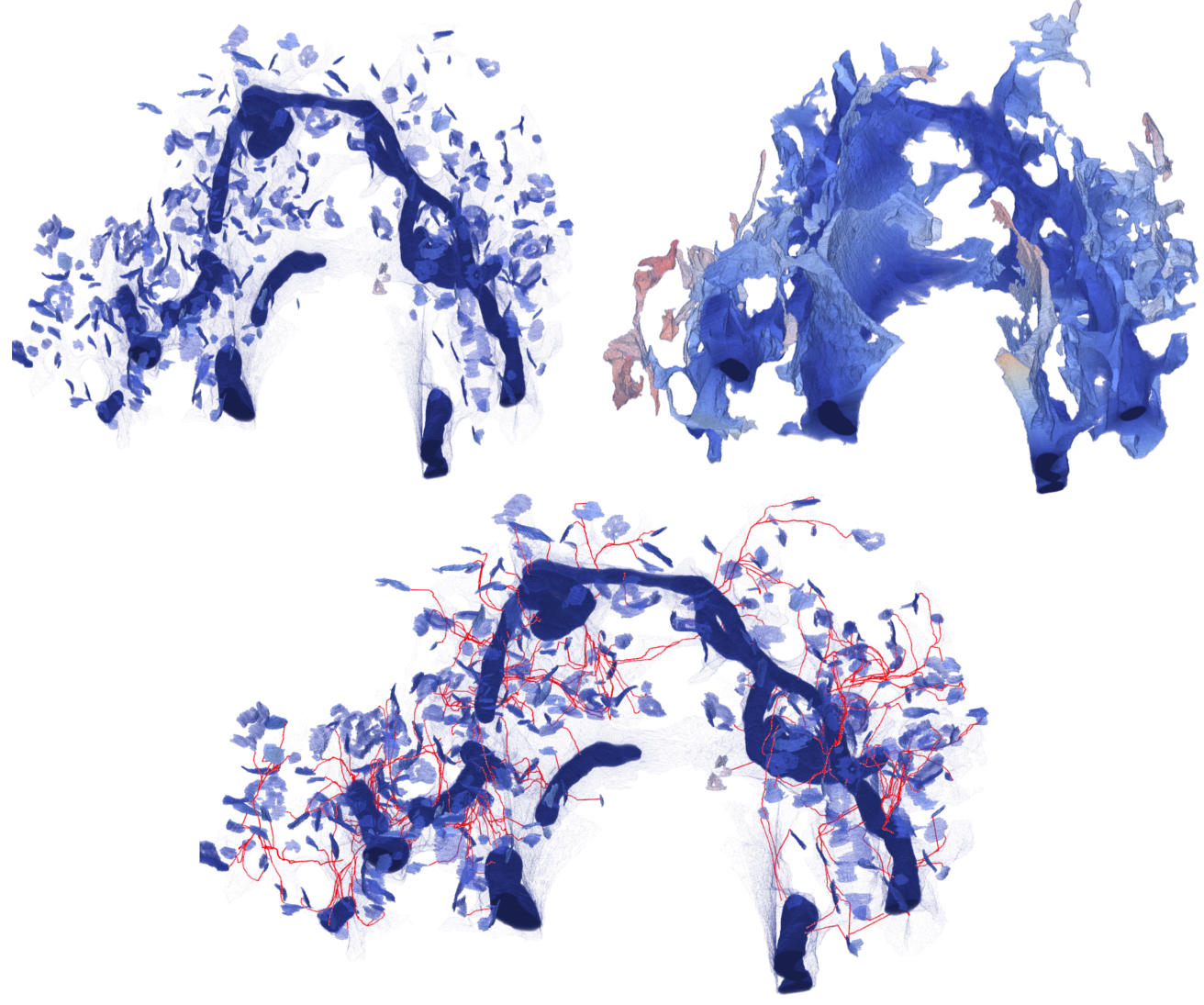Shape Analysis Group
Astrocyte Geometry
Astrocytes, named after their complex starlike shape, play a fundamental role in the functioning of the brain. Little has been done so far to understand or quantify their geometric shape or to study how their form relates to their function. The role of astrocytes in ionic homeostasis, in calcium dynamics, and in providing energy support to nearby synapses is closely linked to their structure. The spatial arrangement of mitochondria inside different compartments of an astrocyte has a direct impact on the calcium dynamics as well as on the energy distribution to the synapses supported by the cell. The complexity of astrocyte shape also changes with its specific role. Fibrous astrocytes, commonly found in brain white matter, have a very different structure than protoplasmic astrocytes, which are common in brain grey matter. In collaboration with Dr. Keith Murai's group, we are working on characterizing the shape of astrocytes and analyzing the spatial distribution of mitochondria inside their different compartments using geometric formalisms. We aim to go beyond the qualitative descriptions of astrocyte shape presently used in the neuroscience research community.
